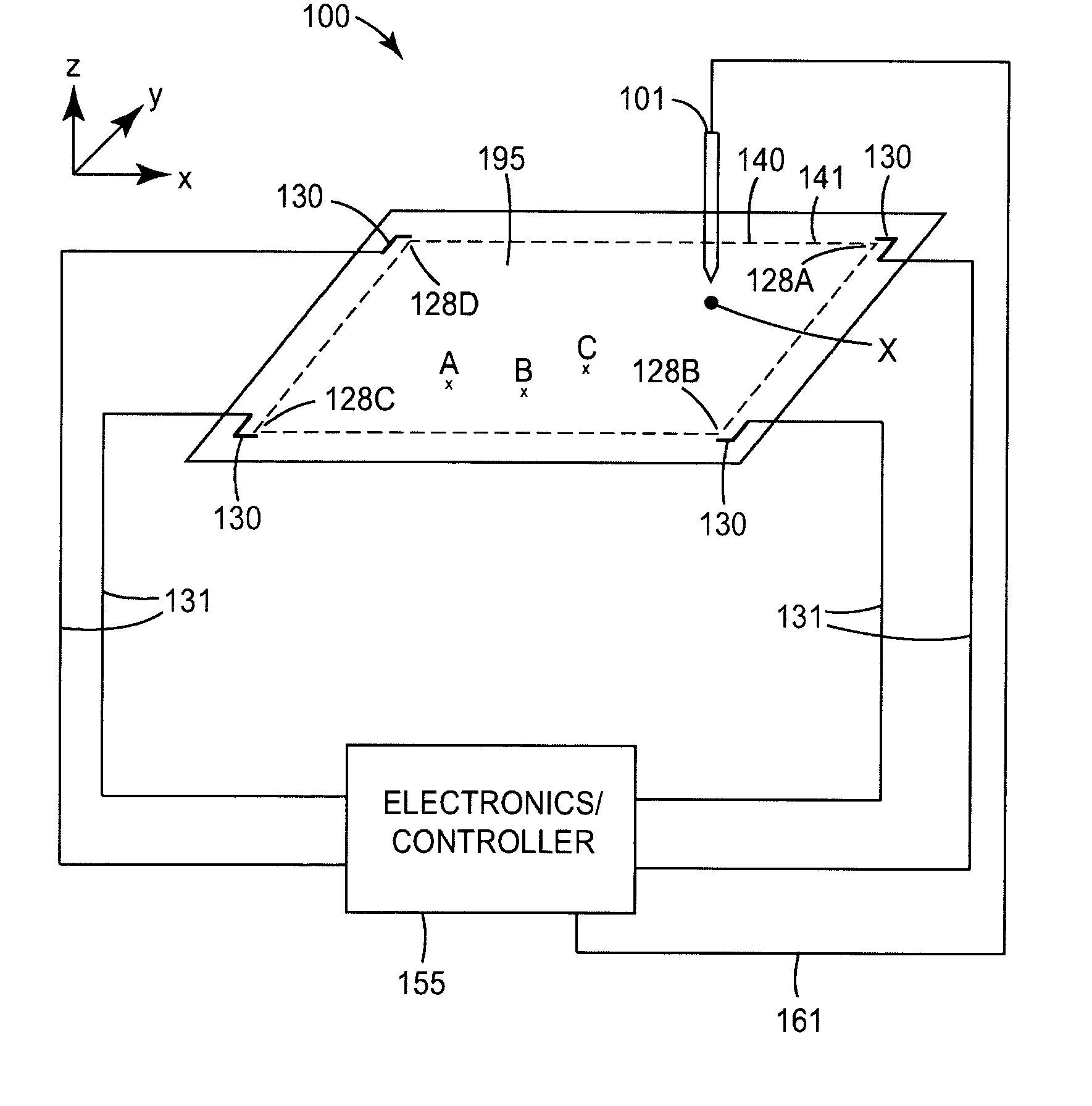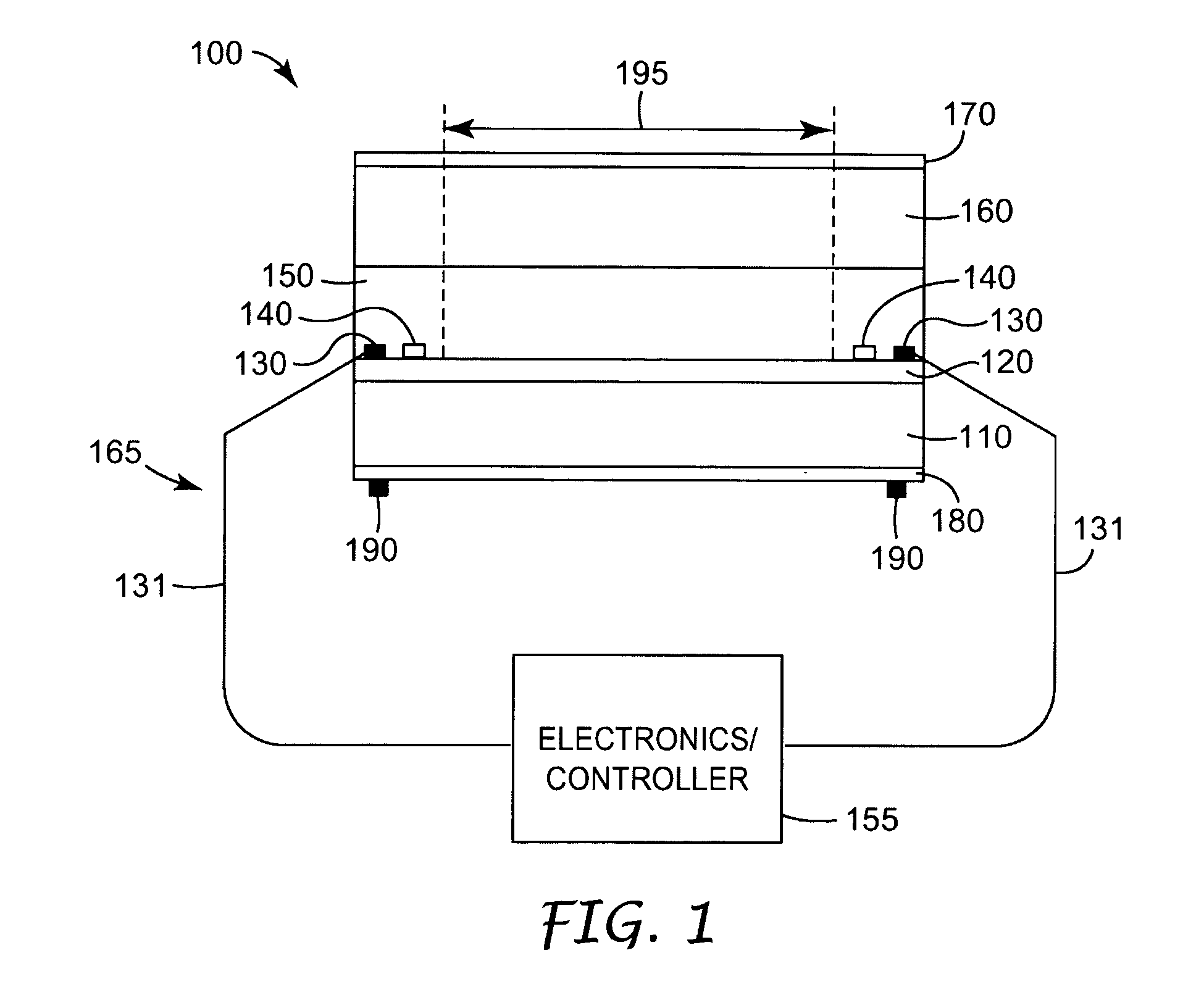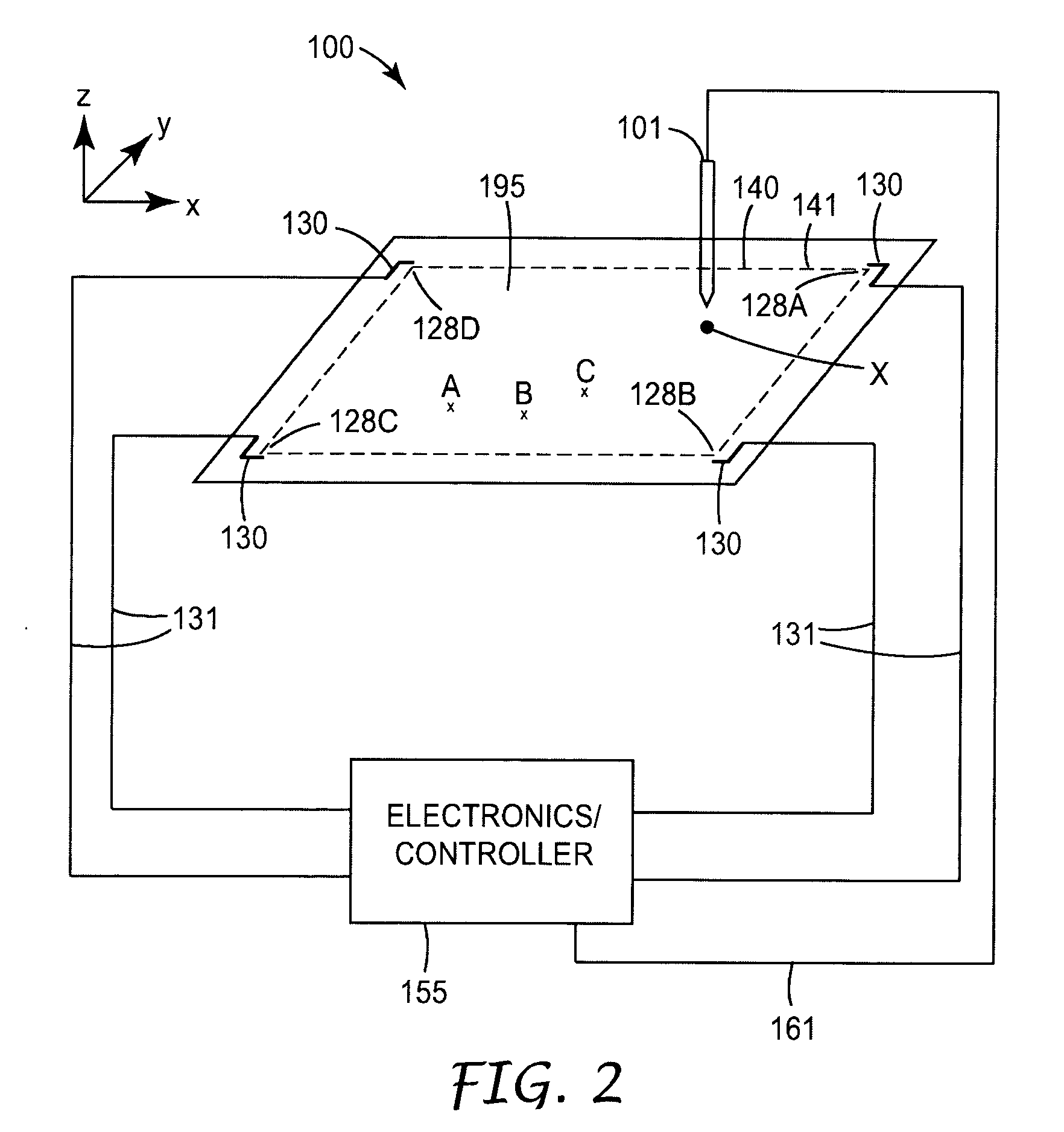Touch input sensing device
a sensing device and input technology, applied in the field of sensing devices, can solve the problems of reducing the touch accuracy of the sensor or even rendering the device nonfunctional, increasing manufacturing costs, and not sufficiently protecting the conductive film, so as to achieve the effect of low temperature processing, increased resistance to scratches, and low cos
- Summary
- Abstract
- Description
- Claims
- Application Information
AI Technical Summary
Benefits of technology
Problems solved by technology
Method used
Image
Examples
example 1
[0065] A touch sensor according to one embodiment of the present invention was assembled as follows.
[0066] A 3 mm thick square soda lime glass substrate was dip coated in a solution containing an organic conductive material available from Bayer Company under the trade designation Baytron P. The solution further included ethylene glycol and an epoxysilane coupling agent. The solution was diluted with isopropyl alcohol. The glass substrate was coated on both sides from the dipping process. The coated glass substrate was dried and cured at 85° C. for 6 minutes, resulting in conductive polymer films being formed on both sides of the glass substrate.
[0067] Next, a linearization pattern was screen printed along the perimeter of one side of the panel using a carbon-loaded conductive ink. The printed substrate was cured at 130° C. for 6 minutes.
[0068] Next, conductive leads were connected to the four corners of the linearization pattern using a conductive epoxy. The assembly was cured at...
example 2
[0072] A touch sensor according to one embodiment of the present invention was prepared similar to Example 1, except that a 0.4 mm thick rectangular soda lime glass substrate was used for the dip coating. The completed assembly was activated using a controller EX II. A finger draw test resulted in a linearity better than 1%.
example 3
[0073] A touch sensor according to one embodiment of the present invention was assembled as follows.
[0074] A linearization pattern was screen printed along the perimeter of one side of a 3 mm thick rectangular soda lime glass substrate that was coated, on the same side, with a 1500 ohms per square TAO. The conductive ink used to print the linearization pattern was from DuPont Company under the trade designation 7713. The printed substrate was cured at 500° C. for 15 minutes.
[0075] Next, conductive leads were connected to the four corners of the linearization pattern similar to Example 1.
[0076] Next, a 0.4 mm thick square soda lime glass was bonded to the side of the panel that was printed with the linearization pattern. The bonding was accomplished using an optical adhesive from Norland Corporation under the trade designation NOA 68. The adhesive was cured using ultra violet radiation.
[0077] Next, the completed assembly was activated using a controller EX II connected to the con...
PUM
 Login to View More
Login to View More Abstract
Description
Claims
Application Information
 Login to View More
Login to View More - R&D
- Intellectual Property
- Life Sciences
- Materials
- Tech Scout
- Unparalleled Data Quality
- Higher Quality Content
- 60% Fewer Hallucinations
Browse by: Latest US Patents, China's latest patents, Technical Efficacy Thesaurus, Application Domain, Technology Topic, Popular Technical Reports.
© 2025 PatSnap. All rights reserved.Legal|Privacy policy|Modern Slavery Act Transparency Statement|Sitemap|About US| Contact US: help@patsnap.com



